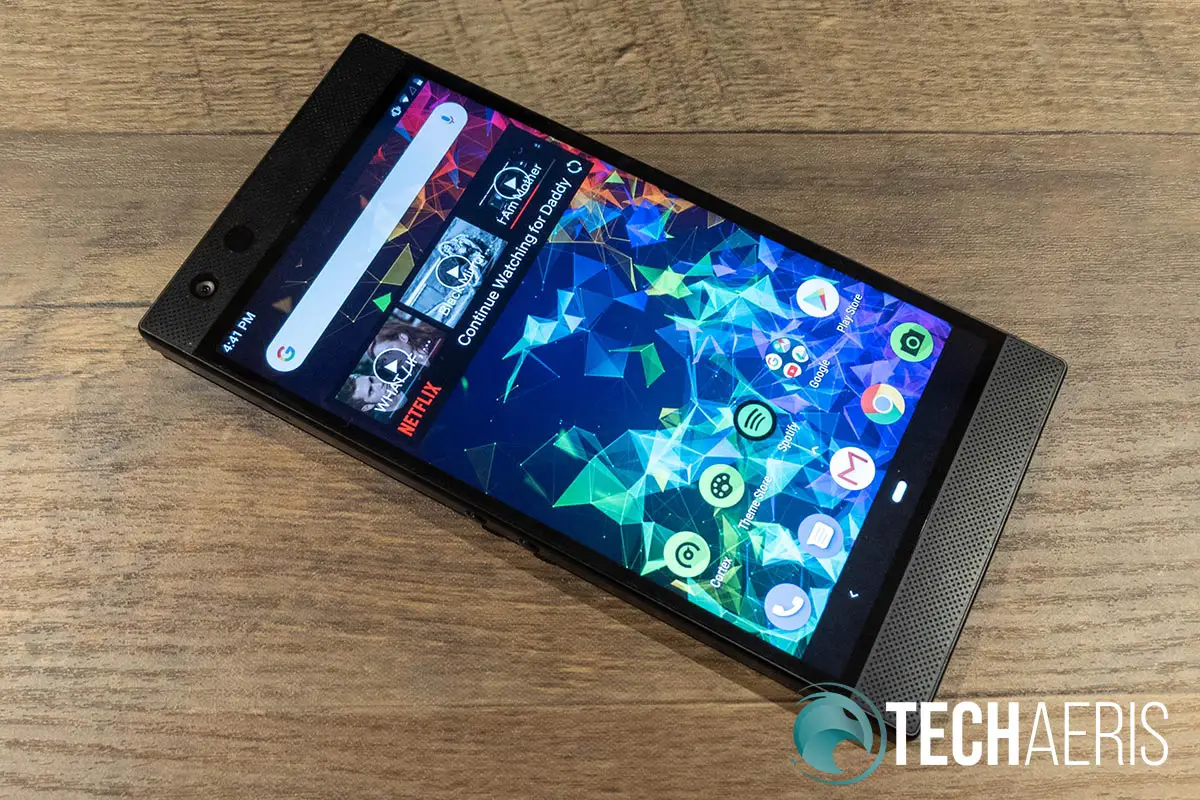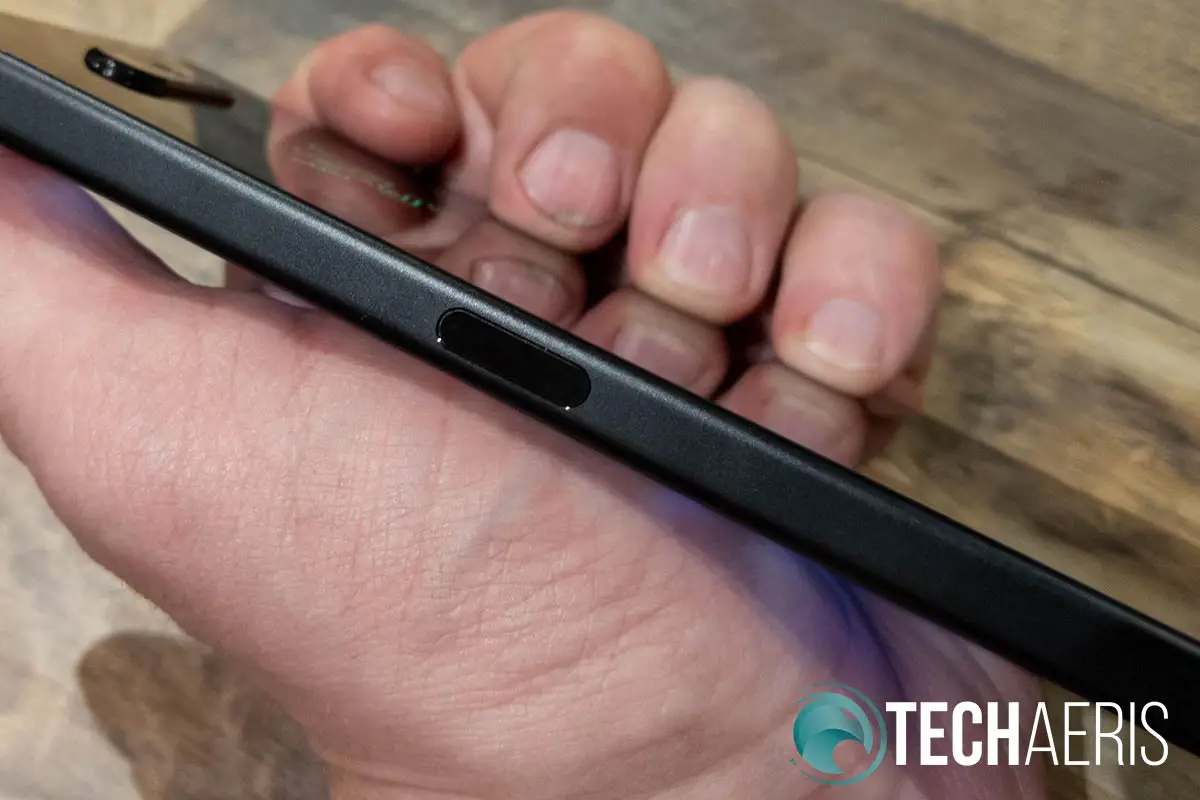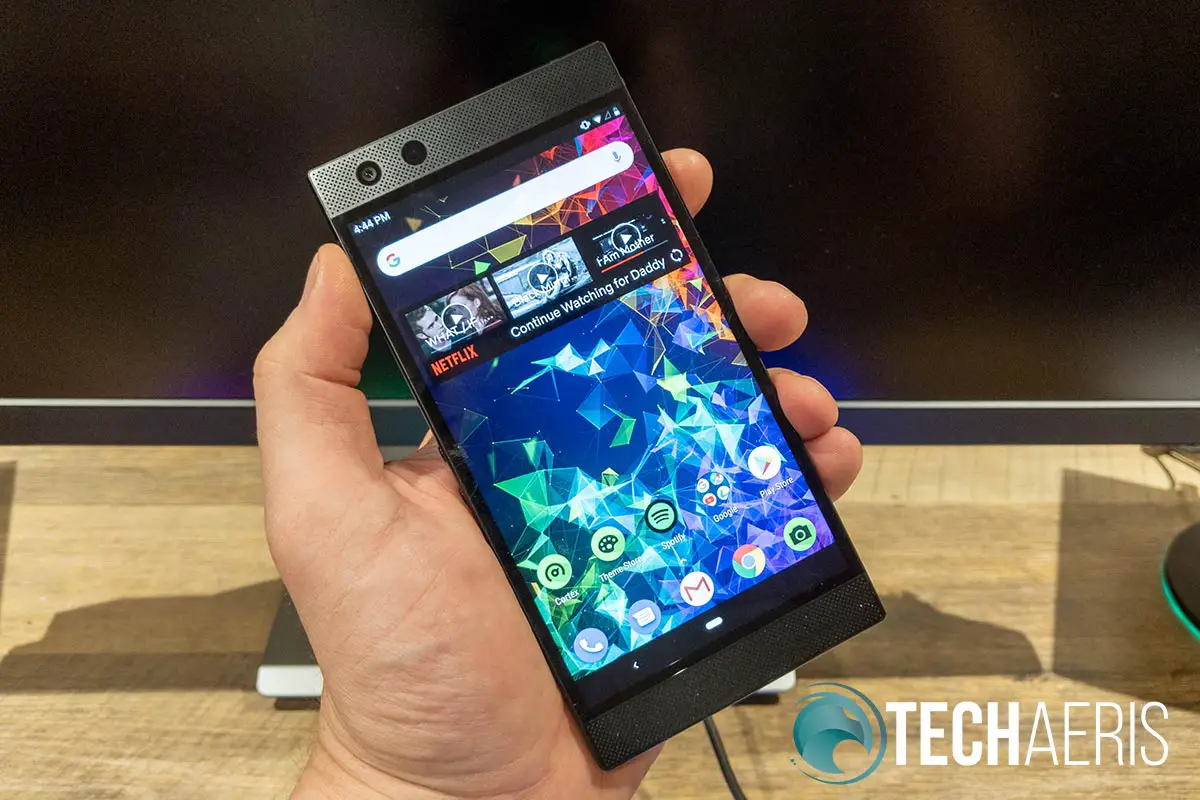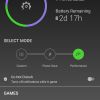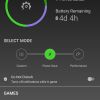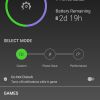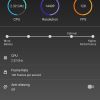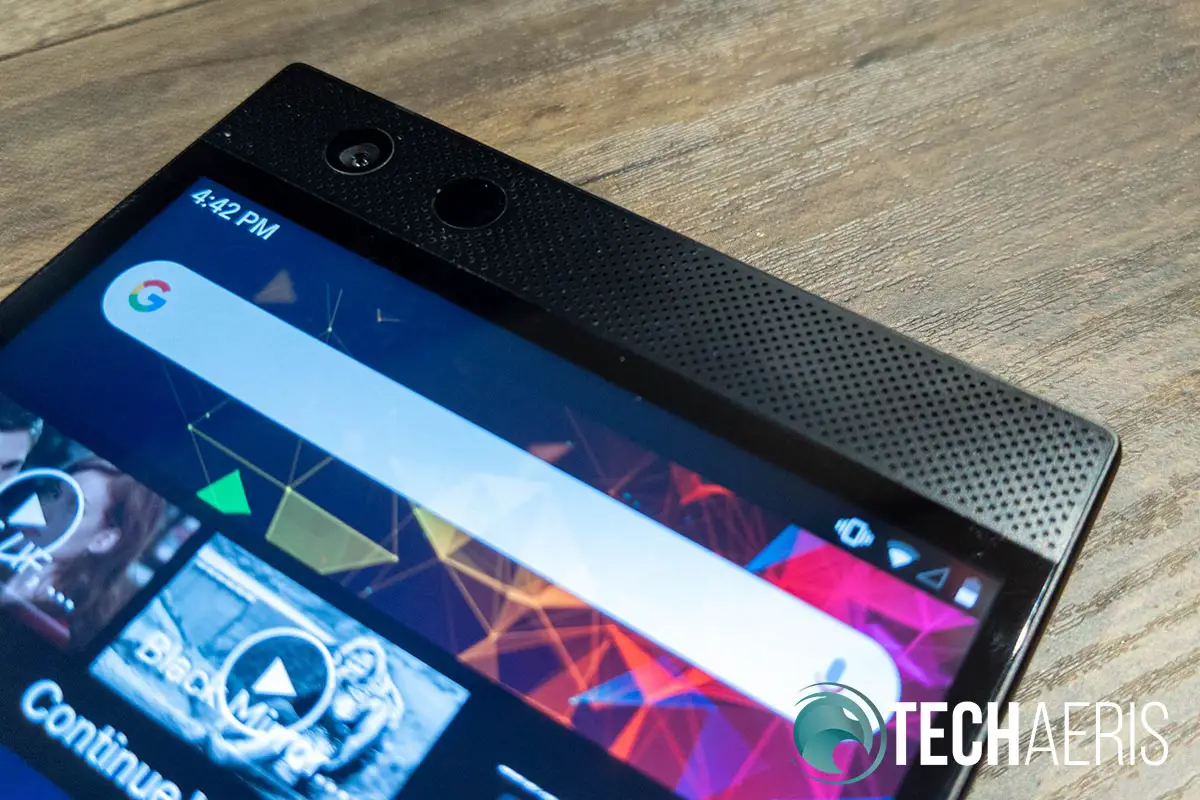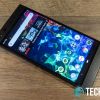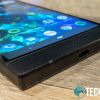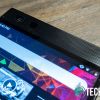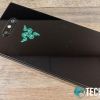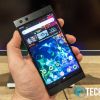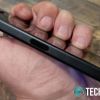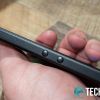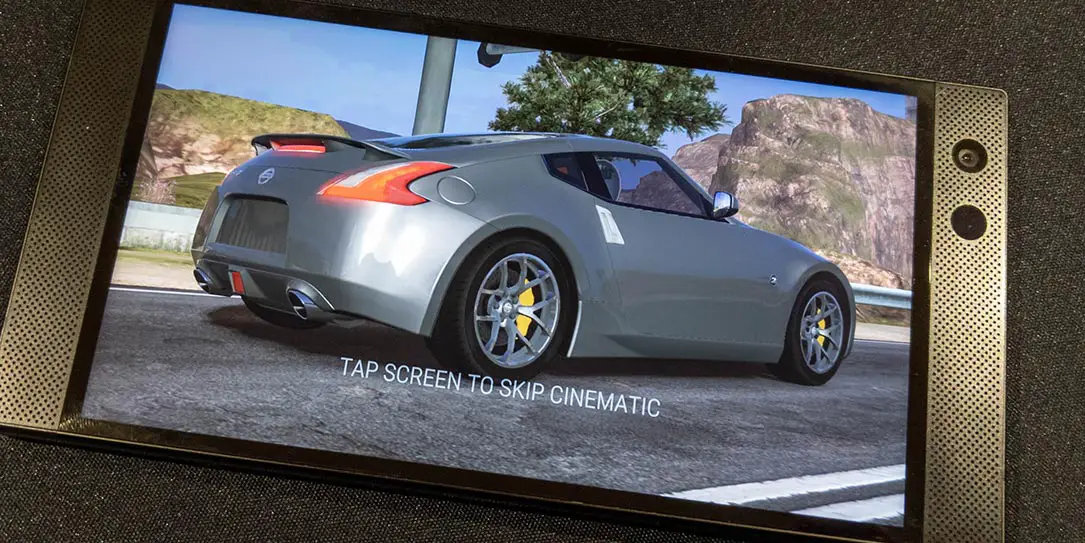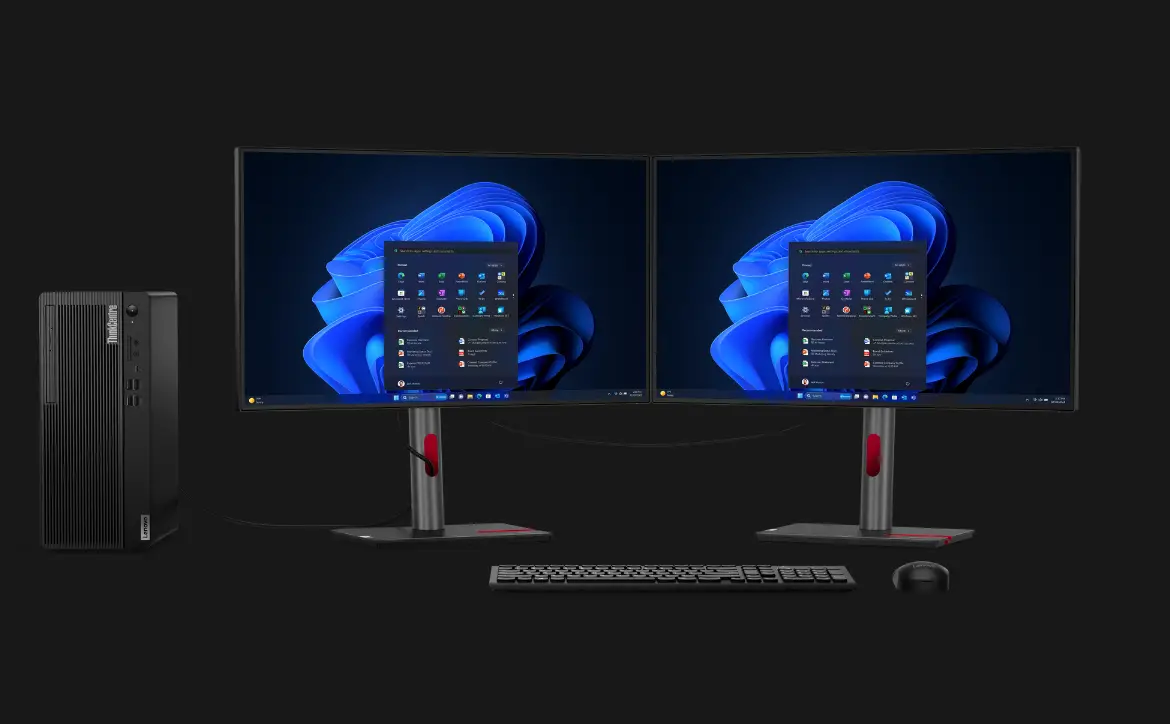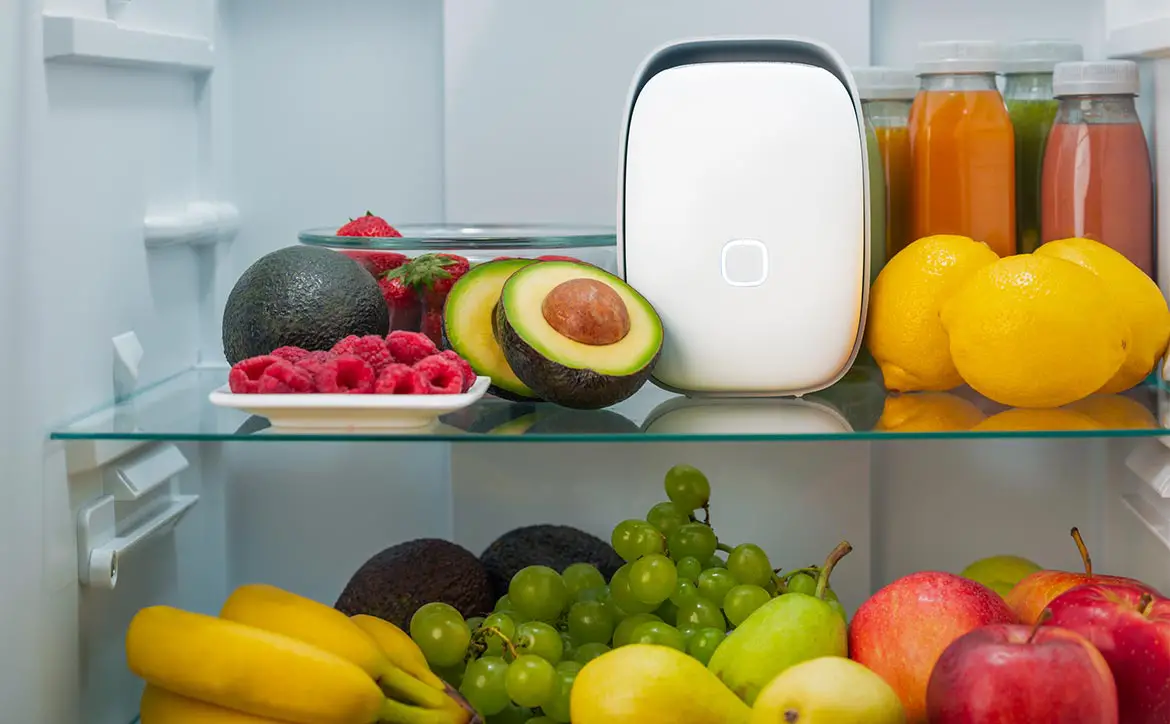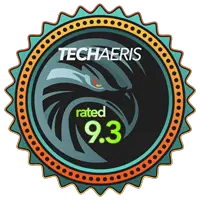
Being a smaller publication, we don’t always get the latest and greatest in order to release a full review on release date or shortly after. That being said, sometimes it’s better to wait a few months as some devices, like smartphones, usually see software updates and bug fixes after launch. Our Razer Phone 2 review takes a look at Razer’s second smartphone which currently runs Android P with a ton of media-centric features. Unlike most reviews which released shortly after launch, the Razer Phone 2 has received some updates over the past few months. On that note, read on for our full review!
Specifications
The Razer Phone 2 has the following features and specifications:
- 120Hz UltraMotion™ Display – A brighter screen with zero lag or stuttering
- Qualcomm Snapdragon 845 – With a custom vapor chamber cooling system
- Dual Front-Facing Stereo Speakers – Featuring Dolby Atmos and a 24-bit USB-C DAC
- Dual Cameras with Image Stabilization – For faster, sharper shots
- New Design with Glass Back – Equipped with wireless charging, Razer Chroma™ RGB logo, and IP67 Water Resistance
- Processor: Qualcomm® Snapdragon™ 845 (2.80 GHz) with Adreno 630 GPU, Vapor Chamber Cooling
- System Memory: 8GB (LPDDR4X)
- Storage
- Internal: 64GB UFS
- External: SIM + micro SD slot (up to 1TB)
- Display
- 5.72-inch IGZO LCD 1440 x 2560
- 120Hz, Wide Color Gamut
- UltraMotion™ Technology
- Corning Gorilla Glass 5
- Multi-touch
- Anti-Fingerprint Protection
- Rear Camera
- Wide: f/1.75 lens with 12MP and OIS
- Telephoto: f/2.6 lens with 12MP
- Dual PDAF (Phase detection Autofocus)
- Dual tone, dual LED flash
- Video: Up to 4K
- Front Camera
- f/2.0 lens with 8MP
- 1080P Video
- Sound
- Dual front-firing stereo speakers with dual amplifiers
- Dolby Atmos Technology
- 24-bit DAC Audio Adapter
- Power
- 4000 mAh lithium-ion battery
- Qualcomm QuickCharge 4.0+
- Wireless Charging
- Wireless
- 802.11 a/b/g/n/ac
- Dual-band (MIMO) with 2×2 antennas
- Bluetooth 5.0
- Operating System: Android 9 (ships with 8.1)
- Logo: Razer Chroma RGB logo
- Bands
- GSM: 850/900/1800/1900
- WCDMA: 1/2/3/4/5/8
- FDD-LTE: 1/2/3/4/5/7/8/12/13/14/17/18/19/20/26/28/29/30/32/66/71
- TDD LTE: 38/39/40/41
- TD-SCDMA: 34/39
- LAA: 46
- 4×4 MIMO: 1/2/3/4/7/30/38/66
- Water resistance: IP67 water resistant up to 1m
- Size: 158.5 x 78.99 x 8.5 mm
- Weight: 220g
What’s in the box
- Razer Phone 2
- USB-C to USB-C Cable
- Audio Adapter (USB Type-C to 3.5 mm)
- Power Adapter
- SIM eject pin
Design
Unlike most other smartphones out there that are opting for rounder corners and edges, the Razer Phone 2 opts for the rectangular “slab” look. Sure, the corners are ever so slightly rounded by the edges are definitely more squared off. The other thing that I noticed about the Razer Phone 2 right away was it’s heft. It definitely feels heavier than other smartphones I’ve recently reviewed.
The front of the phone features a pretty wide bezel on the top and bottom, and for good reason. The top and bottom feature a dimpled pattern with a matte black finish and is where the dual speakers are located. The top grille also has the dual front facing cameras in the upper left corner. The display obviously takes over the majority of the front and sports bezels roughly 1/8-inch thick on all four sides.
The back of the phone is shiny black glass and is super prone to fingerprints and smudges. Centered near the top is the camera bulge which runs horizontally in the middle third of the back. The dual rear cameras are on either side of the centered flash. Centered below the camera bump is the familiar Razer snake logo. When the phone is off, the logo is silverish but when you turn it on, it lights up Razer green by default. It also pulses when you get a notification and can be customized to display different colours.
The power button is centered on the right edge of the phone. It’s also flush with the edge which takes a bit of getting used to. It also houses the fingerprint scanner. Unlike many other fingerprint scanners, you have to press the power button and then scan your finger or thumb to unlock it. Button press aside, the scanner is pretty quick and responsive and due to its placement, I found it worked best with my thumb.
The left side is where you’ll find the volume buttons. These do stick out a bit and are two round buttons which are, again, centered on the edge. Just above the buttons is the SIM/SD card slot. Finally, the USB-C charging/headphone port is located on the bottom edge. All four edges are a matte black rather than the gloss finish like the back of the phone.
To be honest, when compared to other smartphones, the design is quite a bit different and actually looks dated. That being said, it does serve a bit of a purpose, namely gaming in horizontal orientation.
Display
The WQHD screen sports a resolution of 2560 x 1440. Depending on your preference, you can toggle between 1080p HD and the WQHD resolutions.
Of course, the real plus to the display on the Razer Phone 2 is the fact that you can choose between 60, 90, or 120Hz refresh rates. As most gamers should know, a higher refresh rate means smoother gameplay and less screen stuttering during high motion scenes.
The first thing I did when setting up the phone was to set the refresh rate to 120Hz. Even for daily tasks like scrolling through webpages or your home and app screens, there was definitely a noticeable difference. Scrolling does feel a bit smoother than other Android devices with standard refresh rates. Gaming, on the other hand, is where I really noticed the difference. Not once during games like Gear.Club or Shadowgun Legends — which support the higher refresh rate — did I notice stuttering or screen tearing of any kind. Not all games support it, but the ones that do (there’s a list on Razer’s website) tend to run butter smooth.
As with many Android devices, you can toggle between natural, boosted, and vivid colour profiles for more standard or richer colours. Overall, the display is crisp and clear and extra smooth when set to higher refresh rates.
In addition to great colour and a high refresh rate, the phone also supports HDR which is great for watching content on streaming services like Netflix. Whether gaming or watching movies, the display is definitely a treat.
Software
While the Razer Phone 2 ships with Android 8.1, you can (and should) update it to Android 9.0 Pie. Aside from the usual Android Pie features and functionality, Razer has also opted to use the popular Nova Launcher instead of creating their own Android overlay.
As far as Nova Launcher is concerned, you can really customize your home screen and Android experience. Settings include everything from setting your home screen grid, app drawer layout, background colours, icon sets, gestures, integrations, notifications badges, and more. You can even back up and import your settings which is useful for phone resets.
By default, the Razer Phone 2 home screen is a weird mix of standard round icons and green/black themed icons. The themed icons include programs like Cortex, Theme Store, Camera, Clock, Files, Settings, Contacts, and Calculator.
Speaking of, in addition to your standard Google apps and Nova Launcher, the device also has the Razer Cortex app and a Theme Store pre-installed. The Cortex app is pretty simple and allows you to earn Razer Silver while playing games, enable and set up Game Booster, and serves up some Featured Games on a weekly basis.
Out of these, the Game Booster is pretty useful as it lets you adjust the refresh rate as well as performance on a per game basis, allowing you to maximize battery life or performance based on your preference.
Performance
Given the specifications which include the SnapDragon 845 and 8GB of RAM, apps and games launched and ran smoothly and without a hitch. As mentioned in the display section, games which support 120Hz do appear to look a bit smoother. During longer gaming sessions, I didn’t feel like the phone heated up excessively, which is a good thing and likely due to the vapor chamber cooling system inside the phone.
Sound Quality
With its dual front-facing stereo speakers which feature Dolby Atmos, the Razer Phone 2 is one of the loudest and crispest sounding smartphones I’ve used. While it lacks a headphone jack, the USB-C port has a 24-bit DAC which sounds equally fantastic when using USB-C headphones.
Camera
There’s no doubt that there are some amazing cameras on smartphones these days. Unfortunately, the cameras in the Razer Phone 2 are pretty average. While it takes decent pictures, if fantastic photo quality is important to you then you’ll probably want to look somewhere else. There’s no question this device is meant for media consumption first and foremost, and it shows in the camera.
That being said, it does still produce fairly decent images and ones that most users will likely be happy with.
Reception/Call Quality
During our Razer Phone 2 review period, we had no issues with reception or call quality. Reception on both wireless and LTE networks was as expected. Likewise, calls were clear and the other party never mentioned they had issues hearing me.
Battery Life
While it’s nice to have a phone that’ll last you a couple days without having to recharge, that’s become a tall order with flagship devices. On that note, the Razer Phone 2 usually last me a full day unless I was using it for heavy gaming. Of course, I left it on the 120Hz and performance setting to experience the full performance and display value out of the phone. If you reduce both of these options or choose the custom mode to adjust settings on a per game basis, you may get a little over a day before having to recharge.
The phone does support QuickCharge 4.0+ and wireless charging so should you run out, you can get a quick boost to get you through at least a few hours.
Price/Value
When it first came out, the Razer Phone 2 ran at US$799.99. While still cheaper than most flagship devices with similar specifications, early reviews still pegged it as a niche phone for gamers. While that still holds true, the current $499.99 selling price makes this a pretty sweet deal given the CPU, RAM, storage space, and display.
Wrap-up
Assuming you can get past the clunky design, our Razer Phone 2 review found that this device offers great value for the specifications. It performs well for apps and gaming, features a nice buttery smooth display with high refresh rate, and has some of the best sounding speakers I’ve heard in a smartphone.
Are there better all around Android smartphones out there? Most definitely. But with services like Google Stadia and Project xCloud on the horizon, when coupled with a portable game controller, the Razer Phone 2 could make a great game streaming device.
*We were sent a review unit of the Razer Phone 2 for the purposes of this review. In some of our articles and especially in our reviews, you will find Amazon or other affiliate links. Running a website does take money, along with time. Any purchases you make through these links often result in a small amount being earned for the site and/or our writers.
Last Updated on February 3, 2021.

